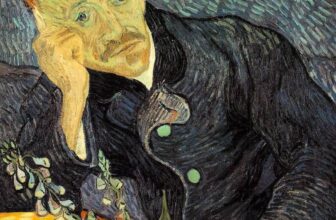
Adele Bloch-Bauer I: The Muse Behind the Gold
In the shimmering world of fin-de-siècle Vienna, a city pulsing with intellectual ferment and artistic innovation, Gustav Klimt emerged as a revolutionary painter. His works, often draped in gold and myth, challenged the traditional boundaries between fine and decorative arts. But among all his opulent creations, one stands supreme, Portrait of Adele Bloch-Bauer I. A masterpiece that transcends canvas and pigment, this portrait is not merely a depiction of a woman, but a symbol of identity, memory, love, loss, and justice.
Painted in 1907, Portrait of Adele Bloch-Bauer I captures the radiant essence of Adele Bloch-Bauer, a prominent member of Vienna’s Jewish aristocracy. Adele was more than just a model; she was a patron of the arts, an intellectual, and the wife of wealthy sugar magnate Ferdinand Bloch-Bauer.
Klimt painted Adele twice, she is the only woman he ever painted more than once in a formal portrait, a detail that has fueled speculation about their relationship. Whether or not they were lovers remains a mystery, but Adele’s deep connection with Klimt is undeniable. The portrait was commissioned by her husband and took over three years to complete. It became the culmination of Klimt’s “Golden Phase,” during which he applied layers of gold leaf, silver, and intricate ornamentation to create luminous, icon-like paintings.
Adele’s image emerges from an intricate tapestry of Byzantine and Egyptian motifs, spirals, and symbolic patterns. Her face and hands are rendered in naturalistic detail, soft and human against the opulence surrounding her. The body, however, seems absorbed into the golden cosmos, making her appear less as a person and more as a goddess or relic. Her gaze is steady, enigmatic, and unyielding, both present and distant, as if aware of her immortal role in art history.
What Is the Meaning of Portrait of Adele Bloch-Bauer I?
At first glance, the painting dazzles with its sheer beauty. But beneath the gold lies a deeper, more complex narrative. Klimt was influenced by the mosaics of Ravenna, especially those depicting Empress Theodora. He sought to elevate his subjects into a realm of the eternal. In Adele’s case, he achieved this transformation spectacularly.
The portrait reflects the synthesis of sensuality and sanctity. Adele, regal and poised, becomes an emblem of feminine power, intellect, and beauty. Yet the layers of gold also entrap her, creating a paradox. Is she liberated by the art, or confined within it? Klimt’s treatment of female figures often provoked such questions. His works tread the fine line between admiration and objectification, transcendence and eroticism.
Furthermore, Adele was a symbol of the cultural elite of Jewish Vienna before the Holocaust, a world that would be irrevocably destroyed. Her portrait, wrapped in gold, can be seen as both a celebration and a lamentation. It is an artifact of a vanished civilization, a ghostly reminder of brilliance extinguished by hatred.
The Theft and the Fight for Justice
After Adele’s untimely death in 1925, Ferdinand continued to treasure the portrait. Adele had requested in her will that the painting be donated to the Austrian State Gallery upon her husband’s death. But that wish was never legally binding. When the Nazis annexed Austria in 1938, Ferdinand fled the country, and his property, including the portrait, was seized by the Nazis. The painting was renamed The Lady in Gold to conceal its Jewish origins and displayed in the Belvedere Gallery in Vienna.
For decades, the portrait was admired as one of Austria’s greatest artistic treasures. But behind the scenes, a family longed to reclaim what had been stolen from them. Ferdinand’s niece, Maria Altmann, a refugee who had settled in Los Angeles, began a legal crusade in the late 1990s to recover her family’s looted art.
The battle was monumental. The Austrian government initially refused to release the paintings, arguing they belonged to the nation. But Altmann, with the help of young lawyer E. Randol Schoenberg, took the fight all the way to the United States Supreme Court. In a landmark decision in 2004 (Republic of Austria v. Altmann), the court ruled in Altmann’s favor, allowing her to sue Austria in U.S. courts.
Ultimately, an Austrian arbitration panel ruled in 2006 that five Klimt paintings, including Portrait of Adele Bloch-Bauer I, must be returned to Altmann and her family. The victory was not only a personal triumph, but a historic precedent in the fight for restitution of Nazi-looted art.
How Much Is Portrait of Adele Bloch-Bauer I Worth?
Following the painting’s return to Altmann, the family decided to sell the artwork, recognizing that its preservation and public accessibility were of global importance. The portrait was sold to Ronald Lauder, heir to the Estée Lauder cosmetics empire and founder of the Neue Galerie in New York City. The price: $135 million, the highest ever paid for a painting at that time.
The staggering sum reflected not only the work’s artistic value, but also its symbolic weight. It was a painting infused with cultural trauma, resilience, and redemption. Lauder himself called it “our Mona Lisa,” recognizing that its worth transcended monetary measure.
Since then, the art market has seen even higher sales, but Portrait of Adele Bloch-Bauer I remains one of the most valuable paintings ever sold, both in financial and emotional terms.
Where Is the Portrait Today?
Today, Portrait of Adele Bloch-Bauer I resides at the Neue Galerie in New York City, a museum dedicated to early 20th-century German and Austrian art. It hangs in a room specially curated to honor its legacy, surrounded by other works from the golden age of Vienna.
Visitors who stand before the painting are often struck silent. It is more than just Klimt’s technical brilliance or the glittering gold leaf that captures the eye, it is the sense of bearing witness to history. The room holds not just a masterpiece, but a story: of a cultured city brought to its knees, of a family torn apart, of justice delayed but not denied.
The Neue Galerie treats the painting with reverence, and rightfully so. In many ways, it is the soul of the museum. It continues to attract visitors from around the globe, drawing in those captivated by its beauty, intrigued by its history, and moved by its journey.
The Legacy Lives On
In 2015, the story of Maria Altmann’s legal battle reached a broader audience through the film Woman in Gold, starring Helen Mirren as Altmann and Ryan Reynolds as her lawyer. The movie brought renewed attention to the painting and the unresolved legacy of art stolen during the Nazi era.
The painting’s narrative now intersects with global discussions about art restitution, historical memory, and moral responsibility. It reminds us that art is never just art, it is also a witness to history, a vessel of identity, and sometimes, a battleground for justice.
Even now, the shimmering gold of Portrait of Adele Bloch-Bauer I does not dazzle blindly. Instead, it invites reflection. It asks us to look closer, not just at the patterns and pigments, but at the woman who stares back at us with quiet intensity. Who was Adele Bloch-Bauer? A muse? A martyr? A symbol of something lost?
Perhaps the true genius of Klimt’s work is that he never tells us. He lets Adele speak through the silence, through the centuries, through the layers of history. Her voice, captured in gold and oil, is now part of our collective cultural memory.
The Portrait of Adele Bloch-Bauer I is a singular convergence of art, politics, history, and memory. Its meaning stretches beyond its gilded surface to encompass themes of identity, injustice, resilience, and restitution. From its creation in 1907 by Gustav Klimt, to its theft by the Nazis, to its triumphant return to the rightful heirs, and finally its home in New York’s Neue Galerie, it is a journey as rich and layered as the painting itself.
Its worth? $135 million in dollars. But in truth, Portrait of Adele Bloch-Bauer I is priceless.




